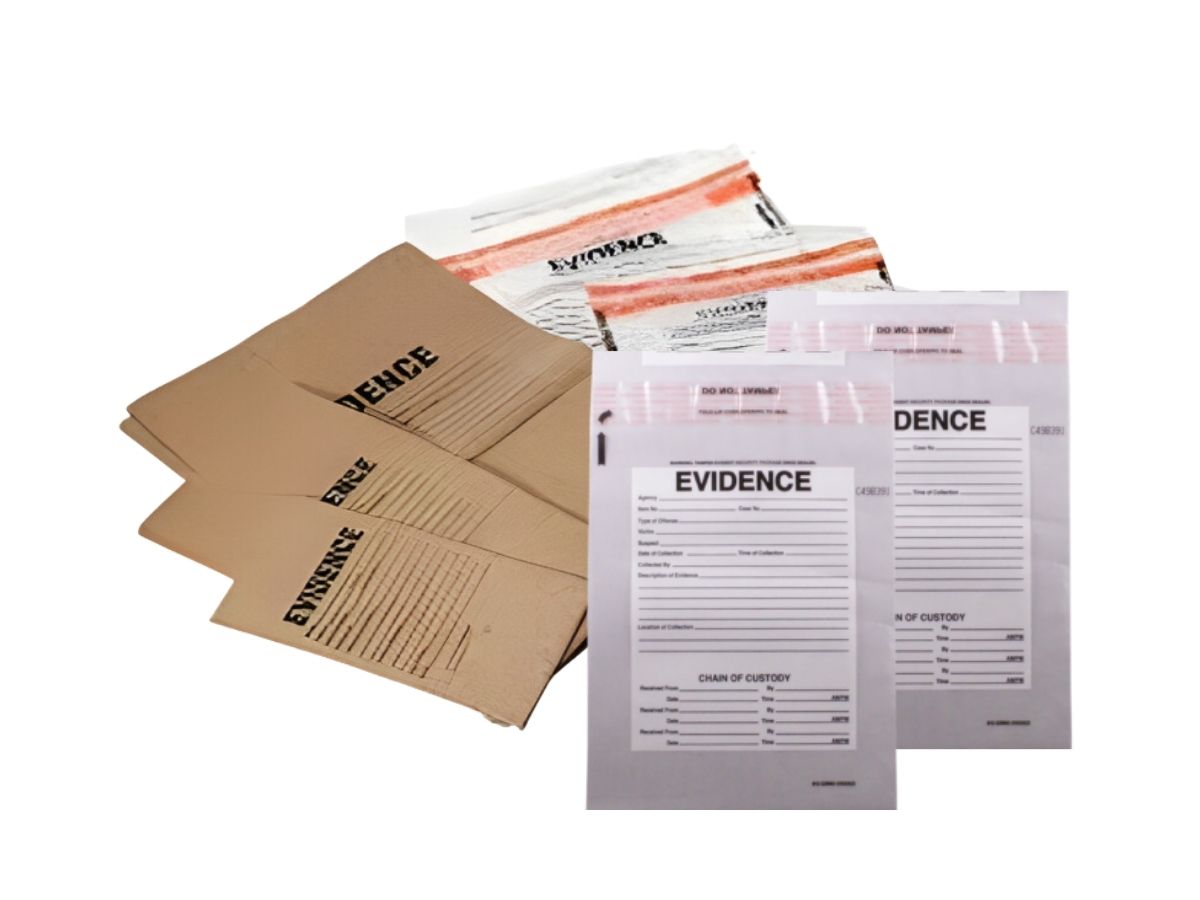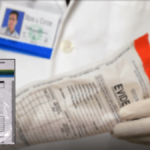How to Properly Document and Store Evidence Bags

In the world of law enforcement and crime scene investigation, the proper collection, preservation, and storage of evidence are of paramount importance. Evidence bags play a crucial role in this process, and knowing how to correctly document and store them is essential for maintaining the integrity of the evidence.
This blog will explore the best practices for handling evidence bags, including how to store evidence bags, the role of crime scene store evidence bags, and the collection and preservation of evidence. Whether you are a law enforcement officer, a forensic specialist, or simply someone interested in the intricacies of the justice system, this guide will provide valuable insights into the world of evidence management.
Documenting and Storing Evidence Bags: An Introduction
Preserving the Chain of Custody
In any legal case, maintaining the chain of custody is crucial. This refers to the chronological documentation and tracking of physical evidence from the moment it is collected to its presentation in court. Evidence bags are a critical part of this process, as they serve as the containers in which the evidence is placed. Properly documenting and storing evidence bags ensures the integrity of the evidence, which is essential for a fair and just legal system.
Storing Evidence Bags: Best Practices
Creating a Secure Environment
The storage of evidence bags is a significant responsibility, as it directly impacts the outcome of legal proceedings. It’s imperative to follow best practices to ensure that the evidence remains uncontaminated, secure, and readily accessible when needed for court proceedings.
- Maintain a Controlled Environment: Evidence bags should be stored in a controlled environment with regulated temperature and humidity levels. Extremes in temperature and moisture can damage or alter the evidence.
- Proper Labeling: Each evidence bag should be meticulously labeled with details such as the case number, date of collection, the name of the collector, and a brief description of the contents. This information is essential for tracking and maintaining the chain of custody.
- Security Measures: Evidence storage areas should have robust security measures in place, including restricted access, surveillance cameras, and controlled entry points. This is crucial for preventing unauthorized access or tampering.
- Inventory Management: Regularly check the inventory of stored evidence bags to ensure nothing is missing or compromised. Create a system that tracks the movement and usage of evidence bags.
- Evidence Bag Maintenance: Ensure that the evidence bags themselves are kept in good condition. Inspect them for tears, damage, or contamination. Any compromised bags should be replaced immediately.
- Fire and Hazard Protection: Implement measures to protect evidence bags from potential hazards, including fires, floods, and chemical exposures. Fire-resistant cabinets and climate-controlled storage can help mitigate these risks.
- Digital Documentation: In addition to physical labels, consider digital documentation of evidence bags, making it easier to track and access information quickly.
Crime Scene Store Evidence Bags: Role and Function
An Essential Tool for Investigators
Crime scene store evidence bags are specifically designed to facilitate the collection and preservation of evidence. These bags are made from materials that are unlikely to react with the evidence or leave behind residues that could compromise forensic analysis. They come in various sizes to accommodate different types of evidence, from clothing and biological samples to firearms and documents.
The role of crime scene store evidence bags goes beyond simple storage. They are equipped with features like tamper-evident seals, which provide an additional layer of security by clearly indicating if the bag has been opened or tampered with. This feature is crucial in maintaining the chain of custody and ensuring the reliability of the evidence.
Collection and Preservation of Evidence: The First Step
From Crime Scene to Courtroom
Properly documenting and storing evidence bags begins with the collection and preservation of evidence at the crime scene. This initial step is foundational to the entire legal process and requires careful attention to detail.
- Wearing Appropriate Protective Gear: Crime scene investigators should wear appropriate protective gear to prevent contamination of the evidence. This may include gloves, masks, and coveralls.
- Minimizing Contact: Evidence should be handled as minimally as possible. Using tools like forceps, tweezers, or evidence collection kits can help prevent contamination.
- Photographic Documentation: Before collecting evidence, thoroughly document the crime scene through photographs and sketches. This visual record can be invaluable in court.
- Proper Packaging: Place evidence in the appropriate crime scene store evidence bags. Ensure that each bag is correctly labeled and sealed with tamper-evident seals.
- Chain of Custody: Establish and maintain a clear chain of custody by documenting who collected the evidence, when it was collected, and who handled it thereafter. This documentation is essential in court to demonstrate the evidence’s reliability.
- Transportation: When evidence needs to be transported to a laboratory or another location, ensure it is done so securely and in compliance with legal standards. The chain of custody documentation must be maintained throughout the transportation process.
Store Evidence Bags for Sale: Meeting Legal Standards
Accessible and Compliant
In some instances, legal professionals may need to purchase store evidence bags for sale to ensure they meet the necessary standards for preserving and presenting evidence in court. These bags should be sourced from reputable suppliers who adhere to industry standards and regulations.
When purchasing store evidence bags for sale, ensure that they are compliant with legal requirements and provide the necessary features for evidence preservation and documentation. Look for bags with tamper-evident seals, proper labeling space, and compatibility with evidence storage systems. Always verify the quality and authenticity of evidence bags to maintain the integrity of the evidence you handle.
Preserving & Collecting Evidence: A Legal Imperative
In summary, the proper documentation and storage of evidence bags are crucial aspects of the legal process. Maintaining the chain of custody and ensuring the integrity of evidence are foundational to a just and fair legal system. The storage of evidence bags requires meticulous attention to detail, security measures, and compliance with industry standards.
Crime scene evidence bags play a pivotal role in evidence collection and preservation. They are designed to safeguard the integrity of the evidence and provide tamper-evident features to enhance security.
The collection and preservation of evidence at the crime scene are the first steps in this process. It involves proper handling, documentation, and packaging of evidence to maintain its reliability in court. Whether it’s DNA samples, weapons, clothing, or documents, the meticulous collection and preservation of evidence are essential in the pursuit of justice.
When necessary, purchasing store evidence bags for sale should be done with a focus on compliance with legal standards and regulations. These bags play a critical role in ensuring that evidence is preserved in a manner that upholds legal standards and can be reliably presented in court.
In the intricate world of law and justice, the proper handling of evidence is non-negotiable. It is not only a legal imperative but also a moral obligation to ensure that the justice system functions with integrity and fairness. Properly documenting and storing evidence bags is a key component of this process, and it is a responsibility that all stakeholders in the legal system must take seriously. Whether you are an investigator, a lawyer, a judge, or a concerned citizen, understanding the importance of evidence management is essential for upholding the principles of justice.
Share:
Get A Quick Quote
Social Media
Most Popular

How to Choose the Right Bullet Casing Evidence Bags

Choosing Sustainability: Biodegradable Bags for Soil

A Comprehensive Guide to Seed Packaging Methods
Categories
Tags
Related Posts
RFID vs. Barcodes for Evidence Tracking: A Side-by-Side Analysis
Automated identification technology (AIT), such as barcoding and radio frequency identification (RFID), is increasingly used by forensic labs and law enforcement to track and manage

How to Choose the Right Bullet Casing Evidence Bags
Bullet casings are one of the most common pieces of evidence collected from crime scenes, and their preservation is crucial for investigations. Choosing the right

Choosing Sustainability: Biodegradable Bags for Soil
In our quest for a greener planet, every little choice matters. And one choice that’s gaining traction in recent years is opting for biodegradable bags
